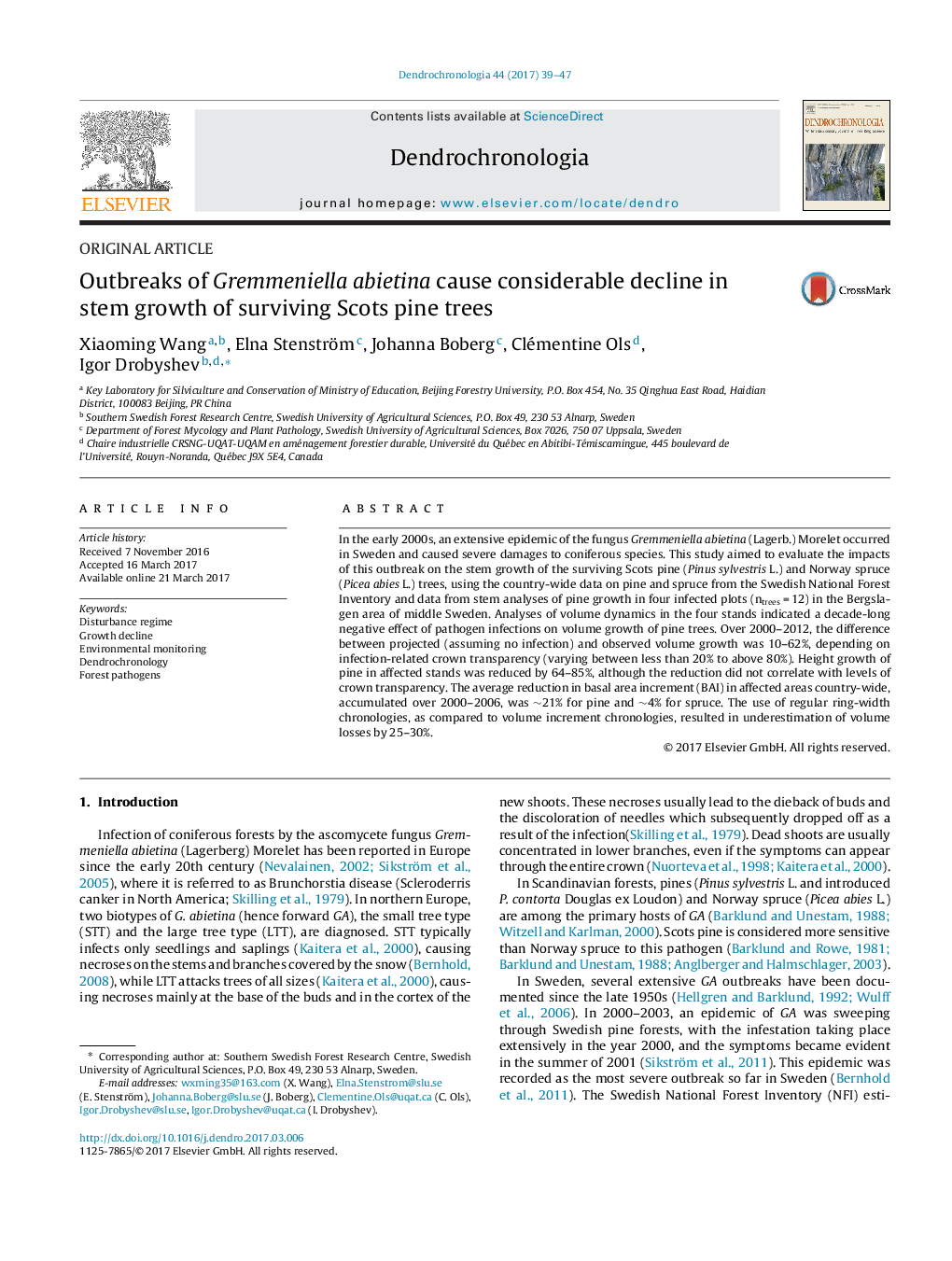| Article ID | Journal | Published Year | Pages | File Type |
|---|---|---|---|---|
| 6458935 | Dendrochronologia | 2017 | 9 Pages |
â¢G. abietina outbreak caused decade long decline in growth of surviving Scots pines.â¢Considerable growth losses were observed even in slightly affected pine forests.â¢Using regular ring chronology for damage assessment underestimated the growth loss.
In the early 2000s, an extensive epidemic of the fungus Gremmeniella abietina (Lagerb.) Morelet occurred in Sweden and caused severe damages to coniferous species. This study aimed to evaluate the impacts of this outbreak on the stem growth of the surviving Scots pine (Pinus sylvestris L.) and Norway spruce (Picea abies L.) trees, using the country-wide data on pine and spruce from the Swedish National Forest Inventory and data from stem analyses of pine growth in four infected plots (ntrees = 12) in the Bergslagen area of middle Sweden. Analyses of volume dynamics in the four stands indicated a decade-long negative effect of pathogen infections on volume growth of pine trees. Over 2000-2012, the difference between projected (assuming no infection) and observed volume growth was 10-62%, depending on infection-related crown transparency (varying between less than 20% to above 80%). Height growth of pine in affected stands was reduced by 64-85%, although the reduction did not correlate with levels of crown transparency. The average reduction in basal area increment (BAI) in affected areas country-wide, accumulated over 2000-2006, was â¼21% for pine and â¼4% for spruce. The use of regular ring-width chronologies, as compared to volume increment chronologies, resulted in underestimation of volume losses by 25-30%.
